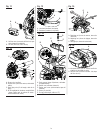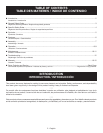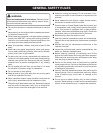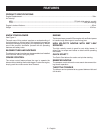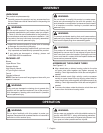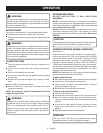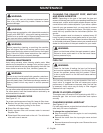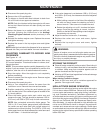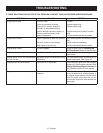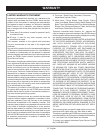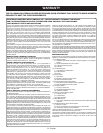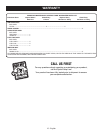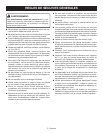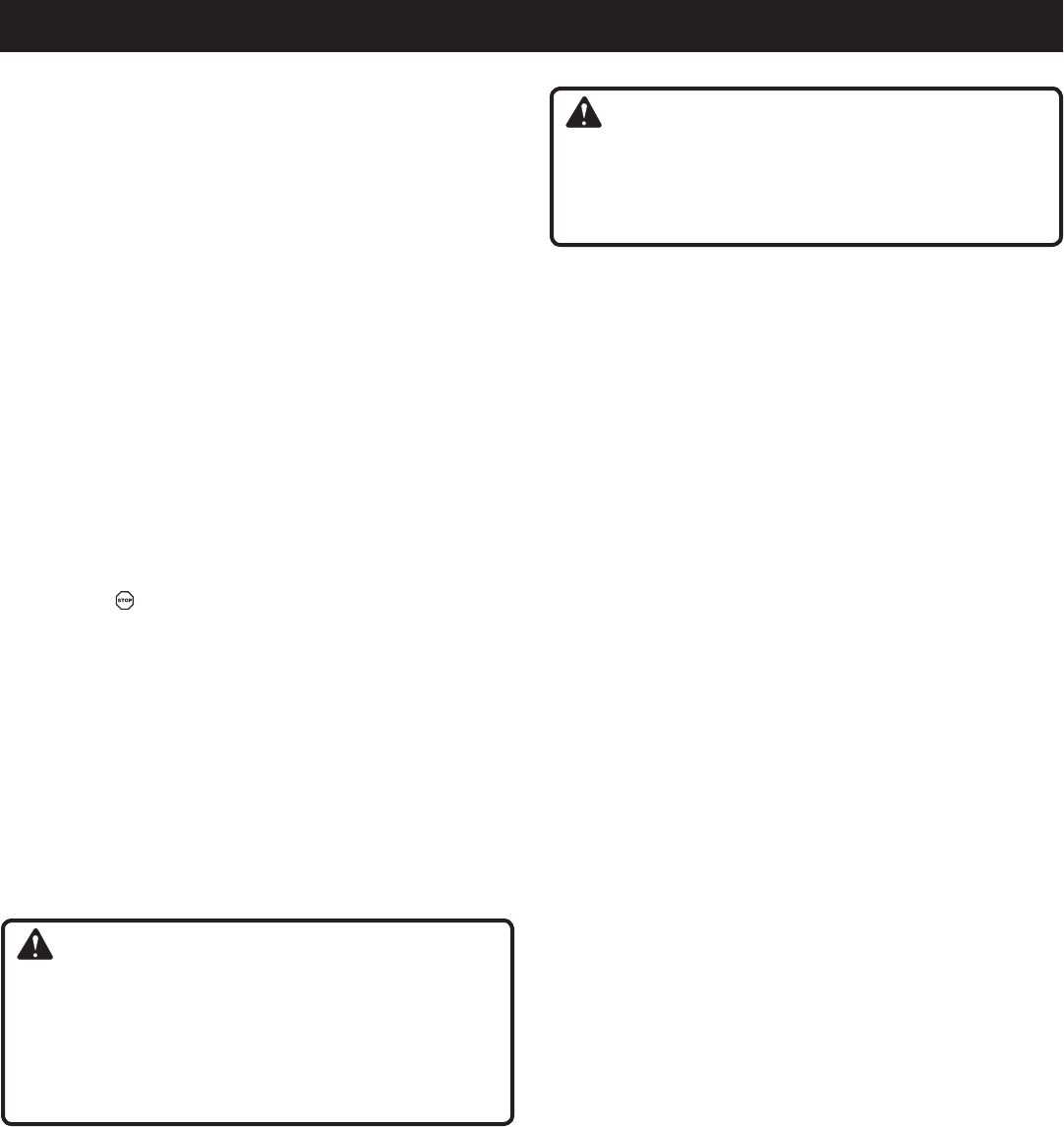
9 - English
OPERATION
STARTING AND STOPPING
See Figures 5 - 6.
Blower should be on a flat, bare surface for starting.
Slowly press the primer bulb 10 times.
NOTE: After the 7th press, fuel should be visible in the
primer bulb. If it is not, continue to press the primer until
you see fuel in the bulb.
Set the choke lever to the FULL CHOKE position.
Do not squeeze the throttle trigger. Start the unit with the
throttle in the IDLE position. Pull the starter grip sharply
until engine attempts to run (no more than 4 pulls).
Set the choke lever to the HALF CHOKE position.
Pull the starter grip until the engine runs. Do not pull the
starter grip more than six (6) times.
NOTE: If the engine does not start, return to the FULL
CHOKE position and repeat the steps that follow.
Allow the engine to run for 10 seconds, then set the choke
lever to the RUN position.
TO STOP THE ENGINE:
To stop the engine, depress the STOP switch to the stop
position “ ”.
HOT RESTART OF THE ENGINE:
Set the choke lever to the RUN position.
Set the cruise control to IDLE.
Pull the starter grip until the engine runs.
IF ASSISTANCE IS REQUIRED FOR THIS PRODUCT:
Do not return this product to the retail store where it was
purchased. Please call our Customer Service Department
for any issues you may have.
For Help Call: 1-800-860-4050
OPERATING THE BLOWER
See Figures 7 - 8.
WARNING:
Always hold the blower away from your body with the
handle in your right hand, keeping clearance between
your body and the product. The muffler side of the blower
should be away from your body. Any contact with the
housing can result in burns and/or other serious personal
injury.
Start the blower. Refer to Starting and Stopping earlier
in this manual. Hold the blower with the upper handle in
your right hand.
WARNING:
Do not place blower on top of or near loose debris or
gravel. Debris may be sucked into blower intake vent
resulting in possible damage to the unit and could result
in serious personal injury.
To keep from scattering debris, blow around the outer
edges of a debris pile. Never blow directly into the center
of a pile.
Operate power equipment at reasonable hours only - not
early in the morning or late at night when people might
be disturbed. Comply with the times listed in local ordi-
nances.
To reduce sound levels, limit the number of pieces of
equipment used at any one time.
Conserve water by using power blowers instead of hoses
for many lawn and garden applications, including areas
such as gutters, screens, patios, grills, porches, and
gardens.
Operate blower at the lowest possible throttle speed to
do the job.
Check your equipment before operation, especially the
muffler, air intakes, and air filters.
Use rakes and brooms to loosen debris before blowing.
In dusty conditions, slightly dampen surfaces when water
is available.
Watch out for children, pets, open windows, or freshly
washed cars, and blow debris safely away.
Hold blower, as shown in Figure 7, so the air stream can
work close to the ground.
After using blowers or other equipment, CLEAN UP!
Dispose of debris properly.
Use the sweeper nozzle for the everyday blowing opera-
tion. This nozzle allows for more area to be covered during
the blowing operation.
The high velocity nozzle is specifically designed for wet
sticky leaves. It allows you to scrape wet leaves or debris
while operating the blower.
CRUISE CONTROL
See Figure 9.
The cruise control can be used to operate the blower without
holding the throttle trigger.
To engage the cruise control:
Pull cruise control lever back towards user, and stop at
the desired throttle setting.
To release the cruise control, push cruise control lever
all the way towards the front of unit.



